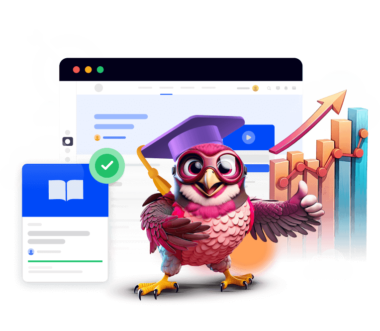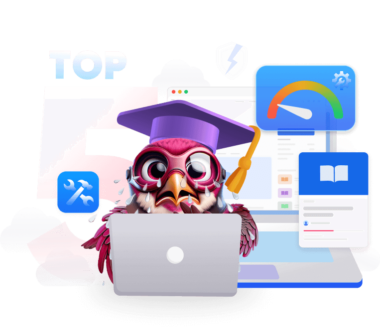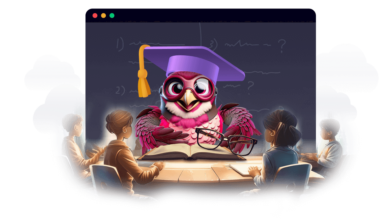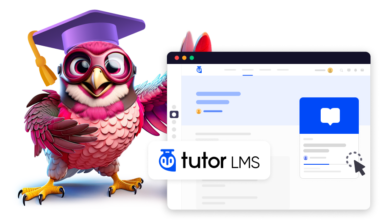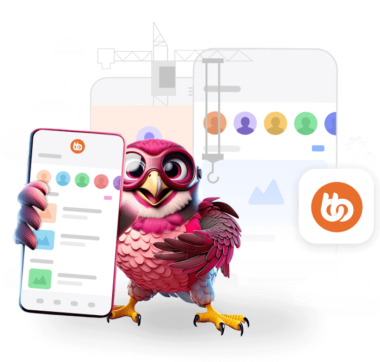According to Global Market Insights, the online learning industry has experienced remarkable growth, expanding by 900% since 2000. With projections showing user numbers reaching 958.4 million by 2028, the potential for online education is immense. However, a significant challenge remains: course completion rates typically hover between 12% and 15%.
For owners of Learning Management System (LMS) platforms like LifterLMS, TutorLMS, or any other LMS, these statistics present both a challenge and an opportunity. When students don’t complete courses, they miss out on valuable education, and course creators lose potential revenue and reputation.
Understanding Course Abandonment
The journey from course enrollment to completion often gets derailed, but understanding why it happens is the first step toward addressing them effectively.
Picture a typical online learner, Sarah, who enrolls in a web development course with enthusiasm. Initially excited about learning to code, she begins to struggle when the course jumps from basic HTML to complex JavaScript without adequate bridging content. The lack of clear progression leads to frustration, and eventually, she stops logging in altogether.
But let’s take a look at the most common factors that lead to course abandonments:
- Mismatched Difficulty: Courses that are either too basic or too challenging fail to maintain student engagement
- Content Delivery: Monotonous presentation methods and lack of varied learning materials
- Knowledge Gaps: Insufficient prerequisite knowledge leading to frustration
- Time Management: The absence of structured schedules makes procrastination easier
- Technical Issues: Poor platform usability or performance problems
- Practical Application: Lack of clear real-world implementation examples
- Commitment Level: Courses requiring unexpected time investments
- Course Hoarding: Students collecting multiple courses without committed focus
- Misleading Marketing: Course content not aligning with promotional material
Now that you understand the key challenges, let’s explore proven strategies to boost course completion rates on your LMS.
Strategy 1: Crafting Clear and Actionable Learning Objectives
The foundation of any successful course lies in its learning objectives. Rather than presenting these as dry bullet points, frame them as achievable milestones in your students’ journey.
Consider this example structure:
“Module 1: WordPress Plugin Development Fundamentals
By the end of this module, you’ll be able to:
- Create a basic plugin structure that follows WordPress coding standards
- Implement secure user authentication methods
- Deploy your first plugin to a live WordPress site
Real-world application: You’ll build a working contact form plugin that you can use in your portfolio.”
This approach shows students not just what they’ll learn, but how it connects to their goals as well.
Strategy 2: Designing an Intuitive Course Structure
Think of your course structure as a roadmap guiding students to their destination. In LifterLMS, you get a drag-and-drop curriculum builder that makes it easy to create a logical progression through your content. For example:
- Opening Hook (2-3 minutes) Connect the topic to real-world applications
- Core Content (10-15 minutes) Present key concepts with examples
- Practice Activity (5-10 minutes) Apply the learning immediately
- Quick Win (2-3 minutes) End with an achievable task that builds confidence
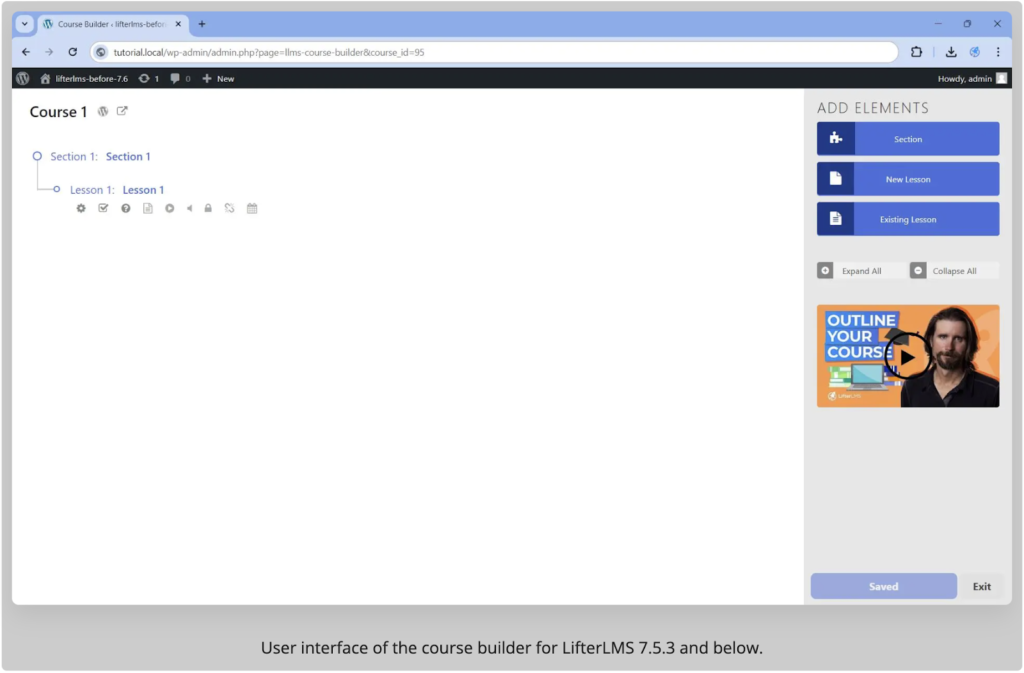
Credits: LifterLMS – Using Course Builder
Strategy 3: Leverage Multimedia Content
Transform your content from flat text into an engaging multimedia experience.
This can be done easily with the help of Word to PPT AI, which converts text-based content into visually appealing presentations.
Here’s how different content types serve different learning needs:
Video Lessons Perfect for demonstrations and visual concepts
Best Practices for videos:
- Keep videos under 10 minutes
- Include captions for accessibility
- Provide downloadable transcripts
- Use AI dubbing for better audio quality
Interactive Elements Engage students through active participation:
- Clickable diagrams
- Drag-and-drop exercises
- Interactive code editors
Strategy 4: Engaging Assessments and Quizzes
Transform traditional quizzes into engaging checkpoints in your student’s learning journey. Think of assessments not as tests, but as opportunities for reinforcement and celebration.
For example, you can follow the “Achievement Pathway”:
Level 1: Foundation Builder: Complete basic concept checks > Earn the “Getting Started” badge > Unlock practical exercises
Level 2: Skill Developer: Apply concepts in real scenarios > Earn the “Practitioner” badge > Access advanced content
Level 3: Master Craftsman: Create original solutions > Earn the “Expert” badge > Join mentor program
Remember: Each assessment should serve as a stepping stone, not a barrier. Include immediate feedback that guides students toward improvement.
Strategy 5: Personalizing the Learning Experience
Imagine your course as a responsive mentor that adapts to each student’s needs. Everyone already wants more personalized experiences that cater to their particular problems, and using LifterLMS’s conditional logic makes this possible through sophisticated learning paths.
For example: If a student scores above 90% on the basic assessment, they can skip the introductory material and move directly to more advanced challenges, ensuring they stay engaged and appropriately challenged.
For those scoring between 70% and 89%, the standard learning path is recommended, with optional support resources available to reinforce key concepts. However, if a student scores below 70%, it is beneficial to guide them through prerequisite modules and provide additional examples to strengthen their foundational understanding before progressing further.
This systematic approach ensures every student receives the right level of challenge and support.
Strategy 6: Optimization for Mobile Learning
In today’s on-the-go world, mobile optimization isn’t optional – it’s essential.
“Mobile users complete courses 27% faster when content is properly optimized for their devices.” – eLearning Industry Report, 2023
Here’s how to create a seamless mobile experience:
The Mobile-First Checklist:
- Content Adaptation Text that’s readable without zooming > Videos that play smoothly on mobile networks > Touch-friendly navigation elements
- Performance Optimization Fast-loading pages > Efficient image compression > Minimal bandwidth usage
- User Experience Simple, intuitive interfaces > Easy progress tracking > Quick access to key features
Strategy 7: Collecting and Acting on Feedback
Your student’s feedback is critical in helping you improve and get better with time. Create a continuous dialogue with your students through strategic feedback collection and implementation.
The Feedback Loop
Collect
- Short, focused surveys at key milestones
- Regular progress check-ins
- Optional detailed reviews
Analyze
- Identify common patterns
- Track completion rates
- Monitor engagement metrics
Strategy 8: Continuous Improvement
Think of your course as a living document that grows and evolves with your student’s needs. So how to ensure that you’re continuously improving your courses?
Monthly Tasks: Review completion rates and update any outdated content. Additionally, keep adding new industry developments so the courses are always up to date with times.
Quarterly Tasks: Analyze student feedback and update assessment questions. Keep further enhancing multimedia content to keep engagement high.
Annual Tasks: Keep performing major content revisions and most importantly, keep your platform updated so it performs optimally at all times.
Technical Considerations
Your course content is only as good as the technical infrastructure supporting it. “Technical issues account for 28% of course abandonment rates. A reliable technical foundation is crucial for success.” – LMS Research Group
Here’s what you need to ensure:
Essential Technical Elements
- Performance
- Page load times under 3 seconds
- Smooth video playback
- Reliable assessment submission
- Security
- Regular backups
- Secure student data
- Protected course content
- Support
- Quick technical help
- Clear documentation
- Regular maintenance
Conclusion
Using the above strategies can help you improve your course completion rates. Remember: clear objectives, intuitive design, engaging content, and continuous improvement are the pillars of a successful course that students and learners tend to finish.
Frequently Asked Questions
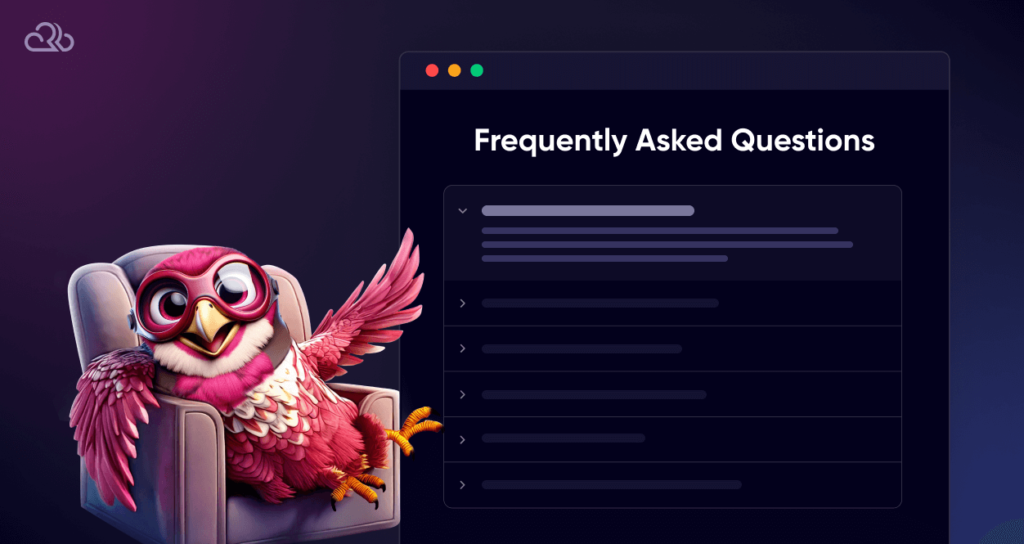
What features in LifterLMS can help improve course completion?
The following features can help improve your LifterLMS course completion rate:
Membership Integration: Offer exclusive content for increased user commitment.
Gamification: Use certificates, badges, and leaderboards to motivate learners.
Drag-and-drop Course Builder: Create an engaging and intuitive course structure.
Quizzes and Assessments: Reinforce learning while maintaining engagement.
Conditional logic: Personalize learning path for users based on progress or quiz results.
How can gamification boost learner engagement?
Gamification helps to make the learning process interactive, fun, and rewarding. Some gamification features include certificates, badges, and leaderboards to help track progress and create a sense of achievement.
What hosting features should I look for when running an LMS?
When running an LMS, look for the following hosting features:
LMS Optimization
Faster load times
Scalability
Reliability
Security
Smooth video playback
Backup solutions
How can I track and analyze course completion rates?
You can use LifterLMS’ inbuilt analytics to track course completion rate or:
Monitor engagement metrics by analyzing the time spent on lessons and interaction with course content
Track quiz performances
Survey learners to understand why they complete or quit halfway
What are the common reasons students drop out of online courses?
Here’s a quick overview of common reasons why users drop out of online courses:
Technical issues (such as slow load times, glitches, or poor mobile optimization)
Lack of motivation
Poor time management
Overwhelming content
Lack of clarity
Boring delivery of content


